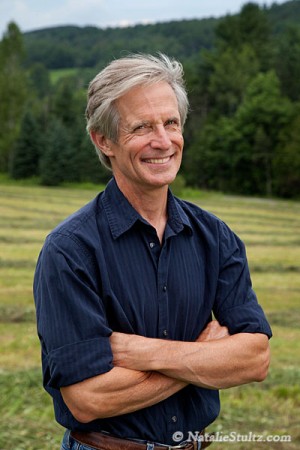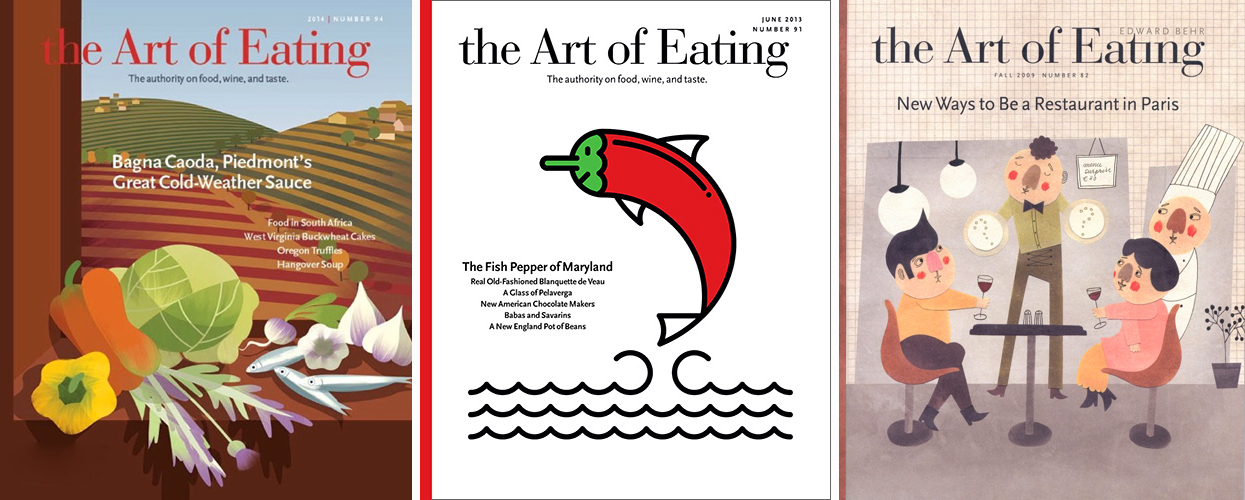In 2014, Ed Behr earned one of the food industry’s most prestigious honors: an induction into the James Beard Foundation’s “Who’s Who of Food and Beverage in America.” Over the past thirty years, he has grown his publication, The Art of Eating, from a simple newsletter into a respected quarterly journal.

For aspiring food media professionals, artisanal producers and culinary professionals inspired by the ethical and aesthetic questions of our time, Ed’s uncompromising vision and entrepreneurship stands as a model of excellence. We caught up with the publisher (and new cookbook author!) to learn more about his inspiring career path.
What were you doing before you enrolled at ICE? And what sparked your decision to attend culinary school?
I was working as a carpenter and builder, which I did for about a dozen years. I decided I wanted to open a restaurant, and to do that I felt I had to go to cooking school, not because I wanted to cook in the restaurant, but because I knew I didn’t know enough to recognize and hire a good chef. In the end, I never opened a restaurant. Since 1986, I’ve been writing about food and wine as the editor and publisher of The Art of Eating.
What accomplishments are you most proud of?
First and foremost, my book: 50 Foods. It represents ten years of work—though you could say 30 years, since it draws on everything I’ve ever learned about food. I aimed to produce a book of permanent value, one that would remain in print forever.
It’s a practical guide to deliciousness, one of only two or three books ever written about the broad connoisseurship of food. I’d like to think that anyone who loves food will feel they have to have it.
On a different plane, the most important thing I’ve done was to write the article “The Lost Taste of Pork: Finding a Place for the Iowa Family Farm.” It appeared in The Art of Eating in 1999, and it may have been the first article written for a non-agricultural audience about humane methods for raising pork. It was certainly the first to link methods, breed and taste—to explain each and how they are connected. I happened to choose the subject of pork without realizing where it would lead.
After Steve Ells, head of the Chipotle chain, read the article, he switched from buying conventional pork to buying humanely raised pork. In doing so, Chipotle provided the first major market for pig farmers—specifically Paul Willis and others selling through Niman Ranch—who were doing the right thing.
Last year the company bought 135 million pounds of naturally raised meat—pork, beef and chicken. I realize “naturally” is an imprecise word, but in this case it represents a huge leap forward from conventional practices. I’m proud to have inspired a few people to open idealistic food businesses and related projects. I’ve also given some good writers their first break in print.
Briefly describe a day in your current working life.
Like so many other people, I spend most of my time looking at a computer screen. I try—but rarely succeed—to devote the morning to my own writing. My days are a mix of editing, writing and emailing (writers, editors, photographers, illustrators and people who can help with research). Actual interviews, in which I might quote someone, I normally do over the phone or in person. Now and then I look up something in an ink-on-paper book, as most of what I want to know is still not anywhere online. I also spend a fair amount of time on the nuts and bolts of publishing.
What might people be surprised to learn about your job?
The unfortunate thing is that there isn’t that much time for cooking, although it’s part of the foundation of my work.
Where would you like to see yourself in five years?
Spending more time writing. I’ve promised to write two more books. They’re underway.
Click here to learn more about creative culinary careers outside the kitchen.





